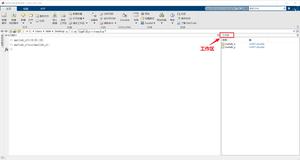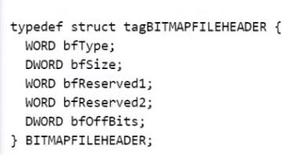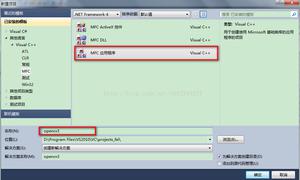Python存储读取HDF5文件代码解析
HDF5 简介
HDF(Hierarchical Data Format)指一种为存储和处理大容量科学数据设计的文件格式及相应库文件。HDF 最早由美国国家超级计算应用中心 NCSA 开发,目前在非盈利组织 HDF 小组维护下继续发展。当前流行的版本是 HDF5。HDF5 拥有一系列的优异特性,使其特别适合进行大量科学数据的存储和操作,如它支持非常多的数据类型,灵活,通用,跨平台,可扩展,高效的 I/O 性能,支持几乎无限量(高达 EB)的单文件存储等,详见其官方介绍:https://support.hdfgroup.org/HDF5/ 。
HDF5 结构
HDF5 文件一般以 .h5 或者 .hdf5 作为后缀名,需要专门的软件才能打开预览文件的内容。HDF5 文件结构中有 2 primary objects: Groups 和 Datasets。
Groups 就类似于文件夹,每个 HDF5 文件其实就是根目录 (root) group'/',可以看成目录的容器,其中可以包含一个或多个 dataset 及其它的 group。
Datasets 类似于 NumPy 中的数组 array,可以当作数组的数据集合 。
每个 dataset 可以分成两部分: 原始数据 (raw) data values 和 元数据 metadata (a set of data that describes and gives information about other data => raw data)。
+-- Dataset
| +-- (Raw) Data Values (eg: a 4 x 5 x 6 matrix)
| +-- Metadata
| | +-- Dataspace (eg: Rank = 3, Dimensions = {4, 5, 6})
| | +-- Datatype (eg: Integer)
| | +-- Properties (eg: Chuncked, Compressed)
| | +-- Attributes (eg: attr1 = 32.4, attr2 = "hello", ...)
|
从上面的结构中可以看出:
- Dataspace 给出原始数据的秩 (Rank) 和维度 (dimension)
- Datatype 给出数据类型
- Properties 说明该 dataset 的分块储存以及压缩情况
- Chunked: Better access time for subsets; extendible
- Chunked & Compressed: Improves storage efficiency, transmission speed
- Attributes 为该 dataset 的其他自定义属性
整个 HDF5 文件的结构如下所示:
+-- /
| +-- group_1
| | +-- dataset_1_1
| | | +-- attribute_1_1_1
| | | +-- attribute_1_1_2
| | | +-- ...
| | |
| | +-- dataset_1_2
| | | +-- attribute_1_2_1
| | | +-- attribute_1_2_2
| | | +-- ...
| | |
| | +-- ...
| |
| +-- group_2
| | +-- dataset_2_1
| | | +-- attribute_2_1_1
| | | +-- attribute_2_1_2
| | | +-- ...
| | |
| | +-- dataset_2_2
| | | +-- attribute_2_2_1
| | | +-- attribute_2_2_2
| | | +-- ...
| | |
| | +-- ...
| |
| +-- ...
|
一个 HDF5 文件从一个命名为 "/" 的 group 开始,所有的 dataset 和其它 group 都包含在此 group 下,当操作 HDF5 文件时,如果没有显式指定 group 的 dataset 都是默认指 "/" 下的 dataset,另外类似相对文件路径的 group 名字都是相对于 "/" 的。
安装
pip install h5py
Python读写HDF5文件
#!/usr/bin/python
# -*- coding: UTF-8 -*-
#
# Created by WW on Jan. 26, 2020
# All rights reserved.
#
import h5py
import numpy as np
def main():
#===========================================================================
# Create a HDF5 file.
f = h5py.File("h5py_example.hdf5", "w") # mode = {'w', 'r', 'a'}
# Create two groups under root '/'.
g1 = f.create_group("bar1")
g2 = f.create_group("bar2")
# Create a dataset under root '/'.
d = f.create_dataset("dset", data=np.arange(16).reshape([4, 4]))
# Add two attributes to dataset 'dset'
d.attrs["myAttr1"] = [100, 200]
d.attrs["myAttr2"] = "Hello, world!"
# Create a group and a dataset under group "bar1".
c1 = g1.create_group("car1")
d1 = g1.create_dataset("dset1", data=np.arange(10))
# Create a group and a dataset under group "bar2".
c2 = g2.create_group("car2")
d2 = g2.create_dataset("dset2", data=np.arange(10))
# Save and exit the file.
f.close()
''' h5py_example.hdf5 file structure
+-- '/'
| +-- group "bar1"
| | +-- group "car1"
| | | +-- None
| | |
| | +-- dataset "dset1"
| |
| +-- group "bar2"
| | +-- group "car2"
| | | +-- None
| | |
| | +-- dataset "dset2"
| |
| +-- dataset "dset"
| | +-- attribute "myAttr1"
| | +-- attribute "myAttr2"
| |
|
'''
#===========================================================================
# Read HDF5 file.
f = h5py.File("h5py_example.hdf5", "r") # mode = {'w', 'r', 'a'}
# Print the keys of groups and datasets under '/'.
print(f.filename, ":")
print([key for key in f.keys()], "\n")
#===================================================
# Read dataset 'dset' under '/'.
d = f["dset"]
# Print the data of 'dset'.
print(d.name, ":")
print(d[:])
# Print the attributes of dataset 'dset'.
for key in d.attrs.keys():
print(key, ":", d.attrs[key])
print()
#===================================================
# Read group 'bar1'.
g = f["bar1"]
# Print the keys of groups and datasets under group 'bar1'.
print([key for key in g.keys()])
# Three methods to print the data of 'dset1'.
print(f["/bar1/dset1"][:]) # 1. absolute path
print(f["bar1"]["dset1"][:]) # 2. relative path: file[][]
print(g['dset1'][:]) # 3. relative path: group[]
# Delete a database.
# Notice: the mode should be 'a' when you read a file.
'''
del g["dset1"]
'''
# Save and exit the file
f.close()
if __name__ == "__main__":
main()
相关代码示例
创建一个h5py文件
import h5py
f=h5py.File("myh5py.hdf5","w")
创建dataset
import h5py
f=h5py.File("myh5py.hdf5","w")
#deset1是数据集的name,(20,)代表数据集的shape,i代表的是数据集的元素类型
d1=f.create_dataset("dset1", (20,), 'i')
for key in f.keys():
print(key)
print(f[key].name)
print(f[key].shape)
print(f[key].value)
输出:
dset1
/dset1
(20,)
[0 0 0 0 0 0 0 0 0 0 0 0 0 0 0 0 0 0 0 0]
赋值
import h5py
import numpy as np
f=h5py.File("myh5py.hdf5","w")
d1=f.create_dataset("dset1",(20,),'i')
#赋值
d1[...]=np.arange(20)
#或者我们可以直接按照下面的方式创建数据集并赋值
f["dset2"]=np.arange(15)
for key in f.keys():
print(f[key].name)
print(f[key].value)
输出:
/dset1
[ 0 1 2 3 4 5 6 7 8 9 10 11 12 13 14 15 16 17 18 19]
/dset2
[ 0 1 2 3 4 5 6 7 8 9 10 11 12 13 14]
创建group
import h5py
import numpy as np
f=h5py.File("myh5py.hdf5","w")
#创建一个名字为bar的组
g1=f.create_group("bar")
#在bar这个组里面分别创建name为dset1,dset2的数据集并赋值。
g1["dset1"]=np.arange(10)
g1["dset2"]=np.arange(12).reshape((3,4))
for key in g1.keys():
print(g1[key].name)
print(g1[key].value)
输出:
/bar/dset1
[0 1 2 3 4 5 6 7 8 9]
/bar/dset2
[[ 0 1 2 3]
[ 4 5 6 7]
[ 8 9 10 11]]
删除某个key下的数据
# 删除某个key,调用remove
f.remove("bar")
最后pandsa读取HDF5格式文件
import pandas as pd
import numpy as np
# 将mode改成r即可
hdf5 = pd.HDFStore("hello.h5", mode="r")
# 或者
"""
hdfs = pd.read_hdf("hello.h5", key="xxx")
"""
以上是 Python存储读取HDF5文件代码解析 的全部内容, 来源链接: utcz.com/z/358881.html





